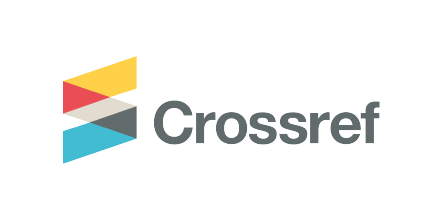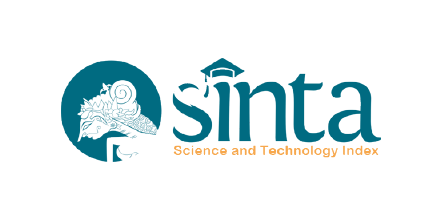Malnutrition and Disability: Evaluating Factors Influencing Severe Malnutrition In Children With Cerebral Palsy In Lusaka, Zambia
DOI:
https://doi.org/10.21776/ub.ijds.2019.007.01.9Keywords:
Malnutrition, Disability, Cerebral palsy, Feeding Difficulties, Low and middle income countries.Abstract
The aim of this study was to identify the main risk factors associated with severe malnutrition in children with CP. An unmatched case control study was used to compare 33 children with CP presenting with severe malnutrition (WAZ ≤ -3 SD) against 66 non malnourished CP children (WAZ ≥ -2SD) at the University Teaching Hospital in Lusaka. Risk factors for severe malnutrition in children with CP were determined with bivariate and multiple logistic regression. A p-value of < 0.05 was considered significant at 95% confidence interval. After adjusting for other variables, factors that remained statistically significant (p-value < 0.05) included the following: use of  unflushed pit latrine toilet (p=0.0119); bilateral CP (p=0.0054); GMFCS level 4 or 5 (p=0.0001); history of illness in the past six months (p=0.0241); swallowing difficulties (p=0.0006); tonic bite (p= 0.0011no weight gain in the past 2 to 3 months (p=0.0001); dependent on feeding (p=0.0061); feeds only on semisolids or liquids (p=0.0231); taking more than 30 minutes feeding (p=0.0381); fed for ≤ 3 times/day (0.0025); child opening bowels after 3 or more days (0.0057); caregiver concerned about child's feeding difficulties (p=0.0076); not likely to be fed Irish potatoes (p=0.0008) and Fish (p=0.0001). The risk factors identified in the current study are related to the child's severity and feeding difficulties including caregiver caring practices.
References
Donald KA, Samia P, Kakooza-Mwesige A, Bearden D. Pediatric cerebral palsy in Africa: a systematic review. InSeminars in pediatric neurology 2014 Mar 1 (Vol. 21, No. 1, pp. 30-35). WB Saunders.
Aggarwal S, Chadha R, Pathak R. Nutritional status and growth in children with cerebral palsy: a review. International Journal of Medical Science and Public Health. 2015 Jun 1;4(6):737-44.
Santoro A, Lang MB, Moretti E, Sellari-Franceschini S, Orazini L, Cipriani P, Cioni G, Battini R. A proposed multidisciplinary approach for identifying feeding abnormalities in children with cerebral palsy. Journal of child neurology. 2012 Jun;27(6):708-12.
Dahlseng MO, FinbrÃ¥ten AK, JúlÃusson PB, Skranes J, Andersen G, Vik T. Feeding problems, growth and nutritional status in children with cerebral palsy. Acta paediatrica. 2012 Jan;101(1):92-8.
Sullivan PB. Nutrition and growth in children with cerebral palsy: setting the scene. European journal of clinical nutrition. 2013 Dec 4;67(S2):S3.
Bellamy C. The State of the World's Children 1998: Focus on Nutrition. UNICEF, UNICEF House, 3 UN Plaza, New York, NY 10017; World Wide Web: http://www. unicef. org; 1998.
Minja EA, Fredric F, Mkopi N, Kassim N, & Lyimo MKB.. The Impact of Neurological Disorders on Nutritional Status and Growth of Children: Muhimbili National Hospital, Tanzania. 2015.
Groce N, Challenger E, Berman-Bieler R, Farkas A, Yilmaz N, Schultink W, Clark D, Kaplan C, Kerac M. Malnutrition and disability: unexplored opportunities for collaboration. Paediatrics and international child health. 2014 Nov 1;34(4):308-14.
Blas E, Kurup AS, editors. Equity, social determinants and public health programmes. World Health Organization; 2010.
Lopes PA, Amancio OM, Araújo RF, Vitalle MS, Braga JA. Food pattern and nutritional status of children with cerebral palsy. Revista Paulista de Pediatria. 2013 Sep;31(3):344-9.
Samson-Fang L, Bell KL. Assessment of growth and nutrition in children with cerebral palsy. European journal of clinical nutrition. 2013 Dec 4;67(S2):S5.
World Health Organization. WHO child growth standards: length/height-for-age, weight-for-age, weight-for-length, weight-for-height and body mass index-for-age: methods and development. 2006.
Wittenbrook W. Nutritional assessment and intervention in cerebral palsy. Pract Gastroenterol. 2011 Feb;92:16-32.
Gladstone M. A review of the incidence and prevalence, types and aetiology of childhood cerebral palsy in resource-poor settings. Annals of tropical paediatrics. 2010 Sep 1;30(3):181-96.
WHO Multicentre Growth Reference Study Group, de Onis M. WHO Child Growth Standards based on length/height, weight and age. Acta paediatrica. 2006 Apr;95:76-85.
Gladstone M, Mallewa M, Jalloh AA, Voskuijl W, Postels D, Groce N, Kerac M, Molyneux E. Assessment of neurodisability and malnutrition in children in Africa. InSeminars in pediatric neurology 2014 Mar 1 (Vol. 21, No. 1, pp. 50-57). WB Saunders.
Karagiozoglou Lampoudi T, Daskalou E, Vargiami E, Zafeiriou D. Identification of feeding risk factors for impaired nutrition status in paediatric patients with cerebral palsy. Acta paediatrica. 2012 Jun;101(6):649-54.
Rosenbaum PL, Palisano RJ, Bartlett DJ, Galuppi BE, Russell DJ. Development of the gross motor function classification system for cerebral palsy. Developmental Medicine & Child Neurology. 2008 Apr;50(4):249-53.
Cans C, Dolk H, Platt MJ, Colver A, Prasausk1ene A, RÄGELOHâ€MANN IK. Recommendations from the SCPE collaborative group for defining and classifying cerebral palsy. Developmental Medicine & Child Neurology. 2007 Feb;49:35-8.
Kamala AA, Iype M, Rajalekshmy K. Nutritional and Feeding Problems among Children with Cerebral Palsy. Kerala Medical Journal. 2014;7(2):32-7.
Johnson A, Gambrah-Sampaney C, Khurana E, Baier J, Baranov E, Monokwane B, Bearden DR. Risk factors for malnutrition among children with cerebral palsy in Botswana. Pediatric neurology. 2017 May 1;70:50-5.
Herrera Anaya E, Angarita Fonseca A, Herrera Galindo VM, MartÃnezâ€MarÃn RD, RodrÃguezâ€Bayona CN. Association between gross motor function and nutritional status in children with cerebral palsy: a crossâ€sectional study from Colombia. Developmental Medicine & Child Neurology. 2016 Sep;58(9):936-41.
Diwan S, Diwan J. A study of feeding problems in children with cerebral palsy. NJIRM. 2013;4(1):78-86.
Kim JS, Han ZA, Song DH, Oh HM, Chung ME. Characteristics of dysphagia in children with cerebral palsy, related to gross motor function. American journal of physical medicine & rehabilitation. 2013 Oct 1;92(10):912-9.
Touyama M, Touyama J, Ochiai Y, Toyokawa S, Kobayashi Y. Longâ€term survival of children with cerebral palsy in Okinawa, Japan. Developmental Medicine & Child Neurology. 2013 May;55(5):459-63.
Arvedson JC. Feeding children with cerebral palsy and swallowing difficulties. European journal of clinical nutrition. 2013 Dec 4;67(S2):S9.
Pridmore P, Carr-Hill R. Addressing the underlying and basic causes of child undernutrition in developing countries: what works and why? Ministry of Foreign Affairs Denmark. 2009.
Katona P, Katona-Apte J. The interaction between nutrition and infection. Clinical Infectious Diseases. 2008 May 15; 46 (10): 1582-8.
Dadgar H, Hadian MR, Lira OA. Effects of Abnormal Oral Reflexes on Speech Articulation in Persian Speaking Children with Spastic Cerebral Palsy. Iranian journal of child neurology. 2016;10(3):28.
Weir KA, Bell KL, Caristo F, Ware RS, Davies PS, Fahey M, Rawicki B, Boyd RN. Reported eating ability of young children with cerebral palsy: is there an association with gross motor function?. Archives of physical medicine and rehabilitation. 2013 Mar 1;94(3):495-502.
Melunovic M, Hadzagic-Catibusic F, Bilalovic V, Rahmanovic S, Dizdar S. Anthropometric parameters of nutritional status in children with cerebral palsy. Materia socio-medica. 2017 Mar;29(1):68.
Ghayas N, Naz S, Fazil H, Sulman N. Identification of oromotor impairments perceived by parents related to feeding difficulties in children with cerebral palsy. International Journal of Physical and Social Sciences. 2014 Jul 1;4(7):229.
Usman H. Frequency of Feeding Problems in Children with Cerebral Palsy. Journal of Islamabad Medical & Dental College. 2017;6(1):31-4.
Al-Hammad NS. Dietary practices in Saudi cerebral palsy children. Pakistan journal of medical sciences. 2015 Jul;31(4):860.
Okeke IB, Ojinnaka NC. Nutritional status of children with cerebral palsy in Enugu Nigeria. Eur J Sci Res. 2010;39(4):505-13.
Marques JM, Sa LO. Feeding a child with cerebral palsy: parents' difficulties. Revista de Enfermagem Referencia. 2016 Oct 1;4(11):11.
World Health Organization. Closing the gap in a generation: Health equity through action on the social determinants of health. World Health Organization; 2008.
Geere JL, Gona J, Omondi FO, Kifalu MK, Newton CR, Hartley S. Caring for children with physical disability in Kenya: potential links between caregiving and carers' physical health. Child: care, health and development. 2013 May;39(3):381-92.
Bashar MK, Iqbal S, Chowdhury MA, Das D, Iqbal M. Developmental Outcome of Children with Cerebral Palsy after Feeding and Seating Intervention. Chattagram Maa-O-Shishu Hospital Medical College Journal. 2015 Apr 4;14(1):11-4.
Adams MS, Khan NZ, Begum SA, Wirz SL, Hesketh T, Pring TR. Feeding difficulties in children with cerebral palsy: low cost caregiver training in Dhaka, Bangladesh. Child: care, health and development. 2012 Nov;38(6):878-88.
Downloads
Published
How to Cite
Issue
Section
License
Copyright (c) 2020 Micah Mutuna Simpamba

This work is licensed under a Creative Commons Attribution-NonCommercial 4.0 International License.















